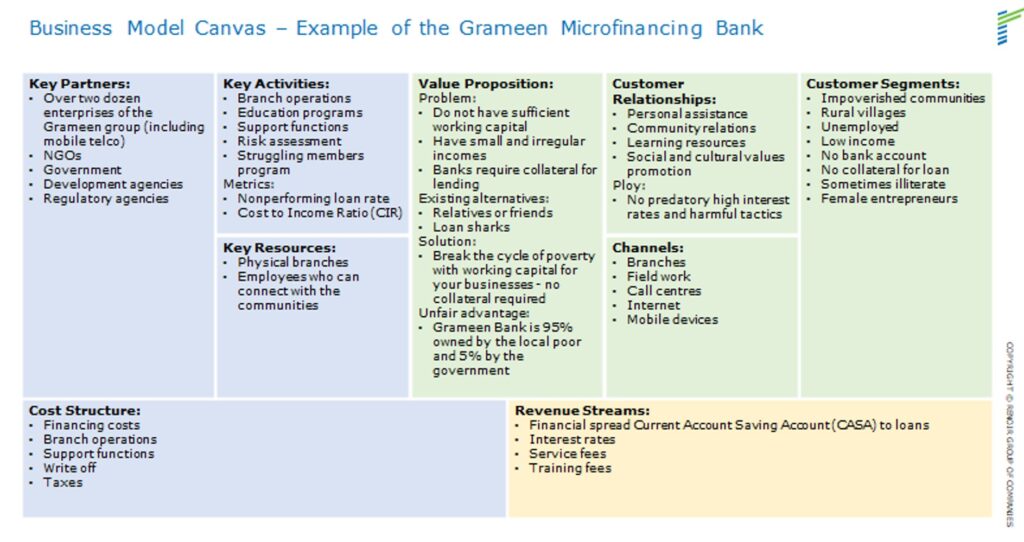Part I: How to Find the Right Business Model
Marketing is sometimes referred to as a blend of science and art. Management guru Peter Drucker once said, “The aim of marketing is to make selling superfluous.” Yet many senior managers see marketing as a ‘black box’ into which money is poured, with little evidence of results.
Marketing Versus Sales
One of the major critiques of marketing for many companies is that it is combined functionally with sales, and often the team is referred to as ‘Sales and Marketing.’ But it doesn’t work this way in the real world.
Marketing and sales should be functionally separate, with marketing asking the questions “What? When? Where? How? Who? Why?”) — and coming up with the appropriate plans — and sales responsible for executing those plans. Marketing should determine targets, and sales should be delivering on them, and there should be arguments between both parties to foster a creative process.
if these two functions are combined, then it is much easier for the staff to set weak targets and make excuses for poor performance – and for those excuses to go unchallenged.
New Realities
When faced with forecasting future sales, the generic approach is to begin with historical sales data, take a view on the market conditions using feedback from customers (which is often anecdotal), add in some macro-economic data, and then finally come out with an estimation of around 3% – 4% growth.
The problem is that this process starts with the assumption that the status quo is broadly correct. There’s no intention to change the dynamics and radically shake up how we sell, rather it’s about repeating the status quo with a little bit more effort (or a bit of help from inflation) and ending up in the ballpark of the estimate.
When it comes to what a company is selling, this is the mainstay of the “4Ps” – Product, Place, Price, Promotion and Service. This is also where there has been an upheaval in marketing over the last decade.
One of these upheavals? Redefining what a company’s business model actually means.
Redefining The Business Model
No one agrees on the definition of a business model, but the easiest description would be the way a company is configured to make money.
The shift from brick-and-mortar retail outlets to online shopping is an example of a change in the business model. The markets, products, and consumers did not change. But the way companies interacted with consumers did.
The other major upheaval is the advent of inbound media such as social media, blogs, review sites, YouTube content creators and so on). Customers are abandoning conventional outbound media (radio/TV ads, newspapers, billboards, etc) in favour of these new medias.
Gone are the days where consumers would be influenced by brand recall and in-store offers (especially for high involvement products such as white goods). They would rather seek out third-party reviews, check out the comments section of online shopping sites, or find out what their favourite social media influencers have to say.
Nearly all companies that we consult with are still working out how to reconfigure to this new reality.
Discovering The Right Business Models
It’s not conventional strategic manoeuvres, such as launching a new product, or expanding into new markets, that have driven the change. Rather, new business models make it easier for consumers to get what they want the way they want it.
Many industries are experiencing similar disruptions. Perhaps the biggest ongoing disruption is in the banking industry, which is being taken on by fintech. For example, the largest bank in the world is the Industrial and Commercial Bank of China, with 443 million customers and more than 430 thousand employees. Compare this to WeChat Pay, with 1 billion customers managed by around 85 thousand employees. That is 1,000% more efficient in terms of employee to customer ratio!
In terms of the logical flow, we need to consider what segments will be entering:
- How do we establish relationships with the customers?
- What channels should we used to access the customers?
- How will we generate income?
- What resources will we need to deliver the product or service?
- What are the key activities the resources will need to do?
- Outside of our own resource, which key partners are crucial to success?
- How much will the delivery cost?
- Between the revenue we see as possible and costs that we expect to incur, is there a profit?
If you are not clear on your company’s business model you may well be oblivious to a large iceberg on the horizon. Finding out the right business model for your company — and quickly utilizing them — could well be a game-changing strategy for your operations.
Probably the most widely used tool to document and existing or proposed business model is the Business Model Canvas.
Customers don’t really care about your offering, the care about how it addresses their needs. Hence, the focus of the Business Model Canvas is about solving a problem or a need for a customer. It’s about finding answers to questions like “What pain are you solving? What gains are you creating? Who are your customers?”
You need to assume that every part of your business model is a hypothesis that needs to be validated. The only way to validate your business model is by testing your assumptions. We may be able to validate certain assumptions by research, but a common approach is to pilot one or more business models. Once the proof of concept is established, the decision-making process will become more straightforward.
This concludes Part 1 of our two-parter on revenue growth from marketing effectiveness. In Part 2, we’ll look at inbound and outbound media, and explore the importance of choosing the right media channel for your message.











